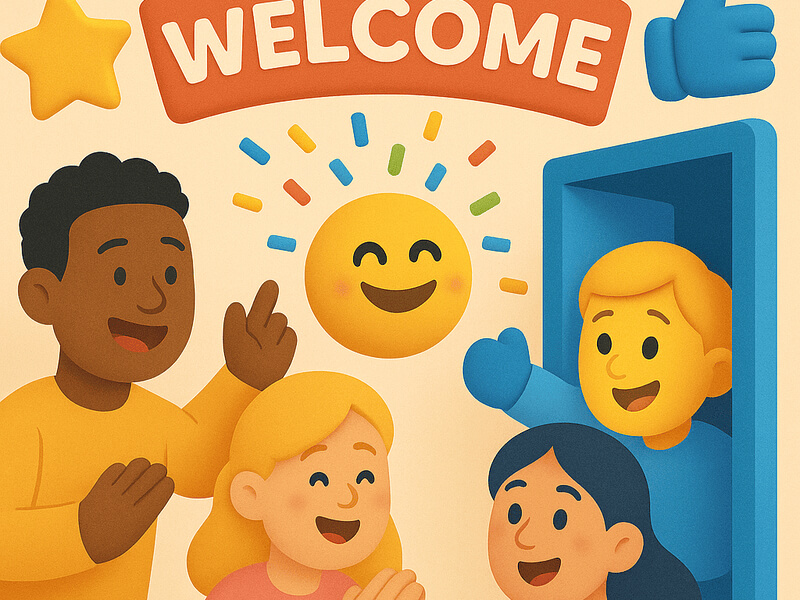
Few things are as important to a company's success as its employees. That's why it's crucial to create a workplace where employees feel valued, appreciated, and motivated. One way the human resource management department can do this is through rewards and recognition programs.
When done right, an employee reward program can help improve morale, productivity, and employee engagement. But what exactly makes for a successful recognition program? In this blog post, we'll share some tips on how to create an effective employee appreciation program in your workplace.
Why are rewards and recognition in the workplace important?
Employee recognition awards are crucial components of the workplace because they provide employees with a sense of accomplishment, motivation, and fulfillment. Recognition helps to foster a culture of appreciation. This creates an environment in which team members are actively engaged in their work.
When positive reinforcement is given, it increases job satisfaction and boosts employee satisfaction. Employee recognition programs allow employees to feel valued and empowered, which leads to increased productivity and creativity. Knowing that you will be rewarded for hard work encourages people to put forth their best effort and push themselves higher than before. Ultimately, employee motivation is vital for maintaining a healthy organizational culture.
Public recognition can play an important role in reducing employee turnover. Studies have shown that when employees feel appreciated, they are more likely to stay with the company. By rewarding employees for their hard work and accomplishments, employers create an environment of trust and mutual respect, which helps to foster loyalty among employees. This leads to better job satisfaction, higher morale, improved productivity, and higher employee retention rates. Additionally, recognizing outstanding performance encourages others to strive for excellence as well; this creates a culture of excellence within the organization that is beneficial for everyone involved.
4 benefits of rewards and recognition in the workplace
Social recognition can have a powerful impact on employee productivity. Studies show that when employees are encouraged and rewarded for their hard work, it leads to increased motivation, engagement, and focus. Recognition ideas are essential for maintaining a positive work environment and ensuring employee happiness.
When employees are acknowledged for their efforts, it sends a message that their achievements and hard work are being noticed and appreciated. This recognition has a profound effect on employee morale, as they feel valued and motivated to keep up the good work. Studies and smart health choices show the benefits not only at work but in lifestyle practices too. One way to make lifestyle improvements alongside workplace enhancements is through a mindful approach to meals. Consider encouraging healthier eating habits with options like a low-calorie meal plan, which can promote physical well-being among employees. This shift can complement internal reward systems by fostering personal growth and healthier life choices outside the office wall.
Rewards and recognition in the workplace can also play an important role in increasing employee loyalty. When employees are rewarded for their hard work and accomplishments, it creates a sense of trust between them and their employers. This leads to better job satisfaction and less turnover.
Peer recognition involves recognizing and praising the efforts of coworkers. When peers recognize each other's accomplishments, it builds trust between them which helps to foster collaboration and cooperation. This leads to better communication, more creative problem-solving strategies, increased productivity, higher morale, and a stronger sense of camaraderie among team members.
5 strategies for implementing rewards and recognition in the workplace
Implementing a system of rewards and recognition in the workplace can work wonders in boosting team morale and generating enthusiasm for tasks. However, it is important to approach it in the right way.
- It is essential to establish clear goals for rewards and recognition that are connected to company values. These goals should be tailored to meet the company's specific needs and should embody core principles, such as customer service excellence, work-life balance, innovation, and collaboration.
- It is also important to ensure rewards are relevant to the receiver in order to maximize their impact. Employee recognition ideas should be personalized and meaningful so that the employee feels valued for their contribution. When rewards are tailored to the individual's needs or interests, the employee feels that management is paying attention to them as a whole human being instead of just seeing them as a cog in the machine.
- In order to ensure a fair and equitable system of rewards and recognition in the workplace, it is important to make sure all team members feel they can earn rewards. Employers should provide opportunities for employees to learn new skills or gain additional experience; this helps create a level playing field where everyone has an equal chance at receiving recognition for their work.
- Employers should also recognize small successes as well as big achievements; by recognizing even minor victories, employers show appreciation for employee efforts and encourage them to keep striving towards bigger goals.
- Recognize individual accomplishments but also extend special acknowledgment for collective efforts. Recognize team achievements by awarding bonus points for collective efforts, thus motivating team members to work together and strive for greater success.
- Leverage automation where you can so that reviews and rewards happen on time and consistently as per expectations. Online software like Matter can make managing your recognition program a breeze, and it provides a consistent and reliable experience for your employees.
By utilizing these strategies, you will certainly create a rewarding environment that both motivates team members and makes them feel recognized for their efforts.
How to make a plan for starting rewards and recognition in the workplace
Making a plan for rewards and recognition in the workplace is a great way to motivate employees and recognize exceptional performance. These are the most important steps for planning your recognition program:
- Choose a dedicated team to be in charge of implementing the program. This team should be given specific objectives and have open lines of communication with upper-level management for feedback.
- Establish criteria to quantify accomplishments; such criteria can include anything from production quotas or customer satisfaction ratings to “above and beyond” tasks like mentoring fellow employees or leading extra tasks outside of regular duties.
- Decide on criteria for who is recognized and how they are rewarded - cash bonuses, extra days off, or other tokens of appreciation.
- Use a software program to automate your program and track metrics. Matter Is a great platform for companies that use Slack or Microsoft Teams. You can track employee engagement and feedback to keep a pulse on your team’s emotions.
With the proper planning, rewards and recognition programs create a positive atmosphere that encourages hard work, performance excellence, and loyalty.
Final tips for adding rewards and recognition in the workplace
Adding rewards and recognition to a workplace is essential for fostering motivation, loyalty, and employee engagement. But how should managers go about doing this? It’s important to consider the unique characteristics of your team--what rewards would interest them and motivate them best? In the ever-evolving landscape of HR, staying updated with the latest HR trends is crucial for designing effective rewards and recognition programs. These trends emphasize data-driven strategies, hybrid work models, and adaptive learning techniques—areas that resonate strongly with modern workplaces seeking to enhance employee engagement through strategic acknowledgment. Once you’ve identified what kind of reward might be most meaningful, structure a system that keeps things fair and rewards employees for achievements of all sizes.
Finding innovative ways to recognize hard work without feeling too make-believe or contrived is key. An informal snack perk may be more appropriate than a bullhorn announcement for someone who shies away from the spotlight, while an open thank-you note sent out to everyone at once on one of your group chat channels can make everyone feel appreciated in one fell swoop. With a little bit of thought and trial-and-error along the way, rewarding staff appropriately can create a positive atmosphere that empowers individuals to keep succeeding!
Track metrics for rewards and recognition in the workplace
Metrics are an important tool for measuring the success of rewards and recognition programs in the workplace. This data can provide insights into the efficacy of various activities and strategies that help motivate staff. Data-driven insight into the success of rewards helps managers make smarter decisions when it comes to employee engagement initiatives. Software programs such as Matter make it very easy to analyze the data from your employee recognition program.
Involving current staff in gathering this data can prove invaluable in understanding what strategies are most effective in motivating your team. Companies should measure levels of satisfaction before and after implementing certain types of recognition, team or individual retention rates, and the differences made in employee enthusiasm by various rewards can all provide essential information to inform your reward system. In short, measuring progress when it comes to workplace recognition is an important strategy that can offer great insight into creating a comprehensive strategy for success.
Rewards and recognition are important tools that can help to improve employee morale and motivation, as well as overall job satisfaction. By implementing a rewards and recognition system in your workplace, you can provide employees with the acknowledgment they deserve for their hard work and contributions. Reward programs have been shown to dramatically increase employee morale, job satisfaction, loyalty, and productivity.
There are many different types of rewards and recognition that you can offer, so it is important to choose those that will be most effective for your business. Once you have developed a plan for implementation, be sure to train managers and supervisors on how to use the system effectively. Finally, don’t forget to evaluate the results after the system has been in place for a while to ensure that it is having the desired effect.
If your company uses Slack or Microsoft Teams, Matter is the perfect software platform for your recognition and rewards program. Schedule a demo to evaluate how this cost-effective automated solution could improve your company culture.
























